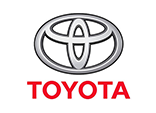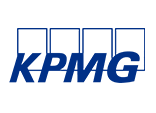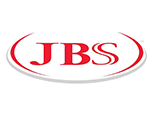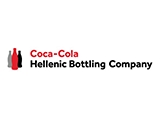As the old saying goes, “You have to spend money to make money.” That’s the truism at the heart of capital expenditure (CAPEX); it’s investing in the business and anticipating a return.
However, we can also say “you have to spend money to spend money wisely.” The CAPEX process, from planning to execution, is complex and requires a major time investment from people across the organization. This process can be inefficient and costly, delivering suboptimal capital budgets and a loss of control over execution.
On the other hand, improvements in the CAPEX process can pay major dividends.
World-class CAPEX management can drive a
15-25% reduction in overall capital spend,
coupled with a 2-4% improvement in ROIC.
coupled with a 2-4% improvement in ROIC.
This guide can help you modernize your CAPEX management, whether you’re just getting started or already on your way.
What Is CAPEX?
Capital expenditure (CAPEX) is money that a business invests in acquiring or upgrading assets with a useful lifespan of more than one year. These fixed assets include physical properties like land, machinery and equipment, as well as some intangibles, like computer software.
CAPEX is considered an investment rather than a cost to the business, and as such is listed on the company’s balance sheet, rather than their income statement.
The CAPEX Process
The CapEx process begins with the department submitting a project request, also known as a wishlist proposal, and follows approval steps highlighted in the CapEx process flow chart below:
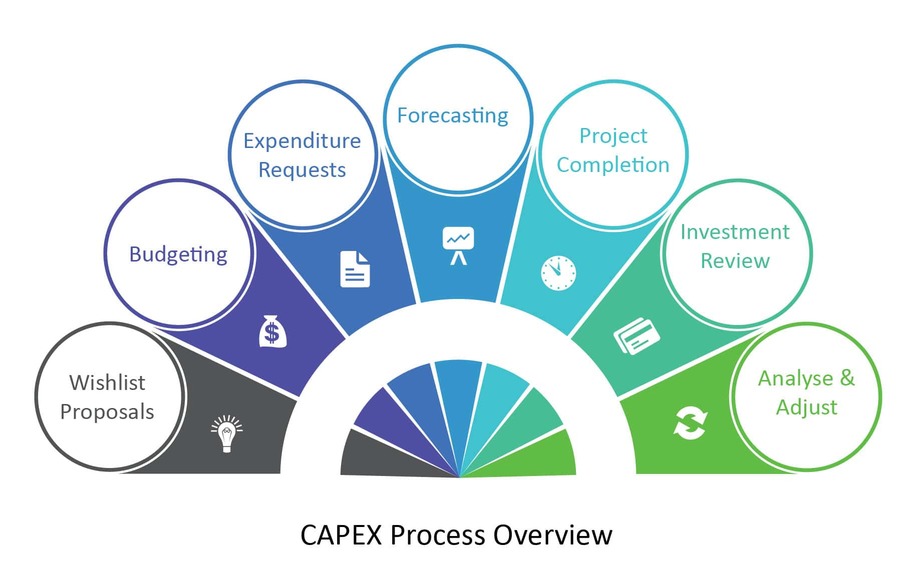
The type of expenses categorized as CAPEX tend to be substantial investments with potentially high risk and reward. CAPEX projects are subject to a rigorous process of review and approval to ensure project requests are prioritized and evaluated against the proposed budget. The CAPEX management process has key stages as outlined below.
A modern approach to CAPEX management can expedite the process at every stage. Ultimately, a digitally transformed CAPEX management process enables more informed decision-making and deeper analysis, faster.
Learn more about the CAPEX Process.
CAPEX vs. OPEX
In contrast with CAPEX, OPEX (operating expenditure) is business-as-usual expenditure that delivers immediate or short-term benefits, and is typically recurring in nature. OPEX is normally planned at the Cost Center level and closely monitored, as it has an immediate impact on an organization’s current financial performance.
Ultimately, while CAPEX is considered an investment in the company, OPEX is a cost necessary to keep the business running.

Examples of OPEX include:
- Utility bills
- Employee salaries
- Software subscriptions
- Leased or rented equipment
While the line between CAPEX and OPEX can seem fuzzy—and some purchases will contain elements of both—it’s important to keep these categories distinct. Conflating the two can lead to an inaccurate assessment of the business’ costs and assets, which hinders the operation of the business and can lead to trouble during tax season.
Learn more about CAPEX vs. OPEX
Growth vs. Maintenance CAPEX
Virtually every business needs to invest in its capital assets to continue operating. Mechanical parts wear out; servers crash; software becomes obsolete. There’s a difference between investing in the business to maintain the status quo and investing for long-term strategic growth.
Growth CAPEX refers to expenditure that enhances an organization’s capital base with new assets like facilities, technologies, or even capabilities. These investments are made with an eye toward positive return on investment and growth over time.
Maintenance CAPEX refers to making only the necessary expenditure needed to keep the business running. While growth CAPEX is motivated by return on investment, maintenance CAPEX is motivated by avoiding risk. For example, replacing a faulty engine in a machine might be a necessary capital expenditure to keep the machine operational—the risk of doing nothing is high enough to warrant the expense.
Most businesses will go through phases of growth or maintenance, depending on a host of factors, such as:
- Changing customer landscape
- Condition of the economy
- Geopolitical events

Growth CAPEX refers to expenditure that enhances an organization’s capital base with new assets like facilities, technologies, or even capabilities. These investments are made with an eye toward positive return on investment and growth over time.
Maintenance CAPEX refers to making only the necessary expenditure needed to keep the business running. While growth CAPEX is motivated by return on investment, maintenance CAPEX is motivated by avoiding risk. For example, replacing a faulty engine in a machine might be a necessary capital expenditure to keep the machine operational—the risk of doing nothing is high enough to warrant the expense.
Most businesses will go through phases of growth or maintenance, depending on a host of factors, such as:
- Changing customer landscape
- Condition of the economy
- Geopolitical events

Growth CAPEX refers to expenditure that enhances an organization’s capital base with new assets like facilities, technologies, or even capabilities. These investments are made with an eye toward positive return on investment and growth over time.
Maintenance CAPEX refers to making only the necessary expenditure needed to keep the business running. While growth CAPEX is motivated by return on investment, maintenance CAPEX is motivated by avoiding risk. For example, replacing a faulty engine in a machine might be a necessary capital expenditure to keep the machine operational—the risk of doing nothing is high enough to warrant the expense.
Most businesses will go through phases of growth or maintenance, depending on a host of factors, such as:
- Changing customer landscape
- Condition of the economy
- Geopolitical events
It takes comprehensive data and analytics to make an informed decision whether to pursue a growth initiative or stay in maintenance mode. Part of CAPEX management is ensuring that these insights are available to guide decision-making.
Learn more about Growth vs Maintenance Capex
Strategic CAPEX Process in Action
Capital expenditures involve stakeholders in multiple departments, in a multi-stage process with high stakes for the business’ success or failure. But even with those challenges, it’s possible to modernize your CAPEX management processes, enhance CAPEX oversight, and achieve measurable gains.
Intelligent CAPEX management can realize:
All of these gains equip businesses to do more with fewer resources. Some businesses have seen as much as a 25% reduction in their year-on-year portfolio spending.
How Modern CAPEX Management Delivers ROI
There are four key areas in which a more strategic CAPEX Management process can realize significant positive ROI:
Learn more about the benefits of streamlining Capital Project Approval Processes
How a Modern CAPEX Management Platform Improves Decision Making
For many businesses, environmental, social and governance (ESG) factors are just as important as financial concerns when it comes to investment decisions. A platform designed for strategic CAPEX management is critical for evaluating the full context of business proposals.
For example, a business that is committed to investing in sustainable projects would evaluate new proposals based on both the proposal’s environmental impact, and the amount the company already has invested in green initiatives. An intelligent CAPEX management platform includes analytics that can take this additional context into account.
As the complexity of CAPEX proposals continues to grow, this type of multi-dimensional analysis will be essential to CAPEX Management.
IQX Business Solutions Powers CAPEX Transformation Across Industries
Overcoming Obstacles to CAPEX Transformation
No one sticks with an outdated process because they prefer to be inefficient. It’s easy to see the benefits of modern CAPEX management, but there are real challenges to be addressed and overcome. Here are a few of the most common reasons that a CAPEX transformation gets stalled, and how to move past these roadblocks
Frequent CAPEX Management Challenges

Complexity of the Decision
This is a multi-dimensional, multi-option, multi-year, multi-stakeholder, multi-constraint problem. Executives are fearful—and rightfully so—of making the wrong decision.
To overcome this obstacle, stakeholders should both: Explore the full positive potential of modernization Explore the solutions that offer the least resistant path to positive ROI
One key consideration is to find a platform that works with your existing architecture—for example, if you’re running SAP, an SAP-based solution will help eliminate complexity.

Global Uncertainty and Upheaval
Capital planning is never a simple process, and the current state of the world has only added more challenges. The pandemic, war in the Ukraine, global unrest and environmental imperatives are all affecting interest rates, supply chains, resourcing, and demand.
However, these uncertainties only underscore the need for greater efficiency and more informed decision-making. Investing the time and resources necessary into CAPEX transformation can pay dividends in both the short and long term.

Lack of Coherent Vision
In most organizations, ideation, strategy management, project portfolio management, project management, project procurement and asset management have been handled by separate people and technologies, and on different cadences (daily, vs monthly, vs annually) driven by competing executive stakeholders (e.g. Engineering vs Finance). This fragmented approach can substantially slow down attempts at transformation.
For a successful CAPEX management transformation, the organization needs champions who can help pull these stakeholders together and move them towards a common goal. One advantage of a more strategic CAPEX process is that once the transformation is complete, these stakeholders will have better ability to communicate and collaborate with each other.

Resistance to Change
Inertia is one of the most powerful forces in both physics and corporate politics. Many would rather stick with an inefficient, complicated system they know, rather than change to something new.
For this reason, change management is one of the most important parts of the process—just as critical as choosing the right platform. Leaders should be prepared to continuously communicate the benefits of the new system, and to offer comprehensive training and onboarding. A best-inclass solution should offer help with the process to ensure employees are making the most of the new technology and procedures.
First Steps towards CAPEX Management Modernization
With the right groundwork in place, it’s possible to overcome inertia and get your CAPEX transformation initiative running. Start with these primary steps:
- Find your champion. Having executive stakeholders on board is essential to gain traction and get the process started. Who will be the primary sponsor of the initiative: Engineering, IT, Finance, or beyond? Ideally, the CAPEX Management transformation process has the CEO’s enthusiastic participation.
- Evaluate the cost and risk of inaction. It’s easy to see the potential pain points in the modernization process. But it’s important to highlight the cost of running the current system. This could include a recent project or strategy failure, loss of competitive edge, or even regulatory consequences from failing to make timely technology and capacity investments.
- Evaluate the cost and risk of inaction. It’s easy to see the potential pain points in the modernization process. But it’s important to highlight the cost of running the current system. This could include a recent project or strategy failure, loss of competitive edge, or even regulatory consequences from failing to make timely technology and capacity investments.
- Avoid analysis paralysis. Simplify your vendor selection by seeking out solutions that leverage and integrate with your existing technical and skill investments.
CAPEX Management Transformation with IQX Business Solutions
IQX Business Solutions provides an end-to-end, flexible, and configurable CAPEX process solution. We are the leading SAP-integrated capital expenditure solution on the market, delivering an immediate ROI to finance teams around the world.
Start your CAPEX Management transformation journey today.











